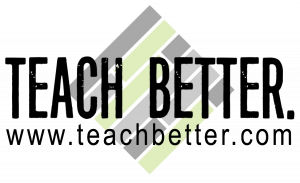Let’s be honest: Professional development planning is tough.
You’re juggling state mandates, teacher needs, budget constraints, and dozens of competing priorities. So, it’s no surprise that even the best school leaders sometimes overlook critical gaps that quietly undermine their PD efforts.
Here’s the good news: Once you uncover these gaps, you can fix them.
What we’ve found is that most of the time it’s not about adding more… it’s about being more intentional, more strategic, with what you already have.
Here are four gaps we see most often when it comes to PD for schools (and how to address each):
1. New Initiatives Don’t Clearly Align with Previous Work
Schools are constantly evolving. New programs, tools, or strategies roll out every year. Without a clear through-line, it can feel like whiplash for your teachers. The truth is, the best professional development builds on the amazing work your teachers are already doing. Otherwise, every year feels like a new challenge instead of a continuous journey of growth.
The gap: New PD often feels disconnected from past initiatives.
How to fix it: Before you launch something new, ask yourself: How does this build on what we’ve already done? Make those connections explicit for your team. Teachers are far more likely to engage when they can see the why and the continuity.
BONUS: Ask your staff these questions, too!
2. There’s a Communication Breakdown
Sometimes the alignment is there, but it’s not as clear to everyone as it is to us. This usually leads to unclear communication, leaving staff wondering, “Why are we doing this?” or “Didn’t we already try something like this?”
The gap: Alignment exists, but it’s buried or unclear to staff.
How to fix it: When introducing any new PD, take the time to frame it within your school’s broader learning goals. Share the vision. Draw a straight line from current and past work to your new initiatives.
[scroll down to keep reading]3. PD is “One and Done” With No Follow-Up
You’ve seen this before: A great PD session energizes your staff… and then fizzles out within days. We see this all the time, literally all over the country. It is almost always due to the same reason – there’s no built-in follow-up, support, or ongoing coaching for teachers. You’re an awesome leader and we know you’re always there to support you staff. But you also have a lot on your plate. You’re pulled in 100 different directions every day. You cannot do it all, and you shouldn’t have to. Find a PD partner that offers the ongoing support your staff deserves.
The gap: Lack of sustained support leads to quick drop-off.
How to fix it: Plan for implementation from the start. This might look like PLC time to follow up, teacher leaders to support roll-out, or strategic coaching sessions from your PD partner that keep the momentum going.
4. There’s No Overarching Strategy
PD shouldn’t be a series of disconnected events. Without a clear, long-term strategy, it becomes reactive — and staff feel like they’re on a hamster wheel of constant change.
The gap: PD is reactive, not strategic.
How to fix it: Build a year-long (or multi-year) professional development plan for your school that focuses on coherence, cohesion, and continued growth over time. Every session should feel like a step in a larger journey, not just a checkbox.
Want to Uncover the Gaps in Your Own PD Plan?
We created the 360° Professional Development Assessment to help school leaders (like you!) identify where their PD is strong, and where it needs more strategy, clarity, and intention.
In just a few minutes, you’ll get a clearer picture of how to better support your teachers and align your PD efforts.
👉 [Download the Free Assessment Now]
Let’s stop guessing and start planning with purpose.
About Chad Ostrowski
Chad Ostrowski is the co-founder of the Teach Better Team, and creator of The Grid Method. He is also a co-author of the Teach Better book. But Chad is a middle school science teacher at heart. He now travels the country sharing his story, working with teachers, schools, and districts to help them to reach more students. Chad is also a member of the Teach Better Speakers Network.



